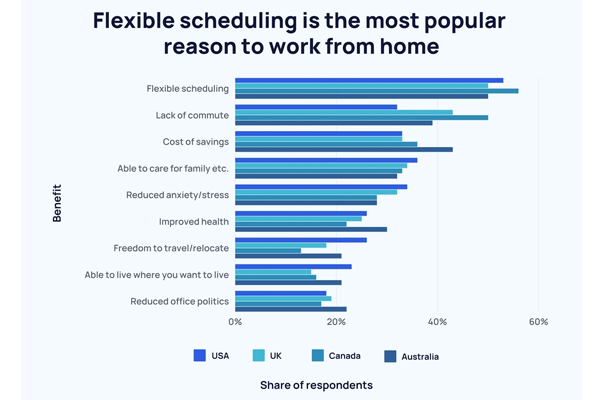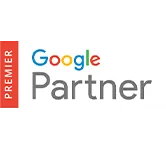Digital Marketing in a Remote World: Tools for Enhancing Productivity and Transparency
“Remote work is not just a perk; it’s a philosophy that allows people to focus on results rather than process.”
— Matt Mullenweg, Founder of WordPress
You must remember how four years ago, a pandemic struck and changed various aspects of our lives. One significant shift it brought with itself was the trend of hybrid and remote work. Curing that phase, businesses realized that productivity could be maintained while working in the comfort of their place and what began as a temporary solution, turned into a norm for various companies.
Now, more and more organizations are moving in that direction and embracing this strategy, by offering remote or hybrid work options to their employees. In a 2023 survey, it was observed that 28% of employees worked remotely, up from 20% in 2020. (Statista: Work from Home – remote and hybrid work)
There is no question that this approach to working has numerous benefits, but it presents some challenges as well. But no need to worry because in this article, I’ll share with you three tools that I found effective for remote digital marketing. So stay tuned till the end and find out how you can enhance your productivity and transparency while working remotely.
Challenges of Remote Digital Marketing Teams
Recently, while studying a Forbes survey, I found out that 56% of remote employees in creative fields struggle with collaboration due to communication difficulties. This took me back to the pandemic days when I started working from home. It was a common challenge for our teams because we relied on creative collaboration.
It is obvious that marketing teams, which require high levels of cross-functional teamwork involving content creators, strategists, and data analysts, are especially vulnerable. Without effective communication tools, projects can experience delays, misunderstandings, and a decline in overall team spirit. For example, misaligned schedules across time zones can cause feedback delays that can take days, slowing campaign processes and having negative results.
As we continued working remotely, more problems unfolded like issues with campaign monitoring, collaborations, tracking performance, workflow delays, and many more. But with time we figured things out and discovered a few tools that proved to be of great help. I’ll share them with you ahead in this article. Before that, let’s discuss another important aspect of remote marketing, i.e. transparency of work.
Managing remote digital marketing teams presents unique challenges, from ensuring clear communication to maintaining team cohesion. The key lies in leveraging the right tools and creating a culture of trust and accountability. By focusing on transparent workflows and fostering strong collaboration, remote teams can overcome geographical barriers and deliver exceptional results.”
— Maria Harutyunyan, CEO & Head of SEO at Loopex Digital
INTERESTING TIDBIT
The statistics below represent the most popular reasons to work from home in the USA, UK, Canada, and Australia.
Ensuring Transparency in Remote Marketing
From my experience, I can confidently say that transparency is one of the most important elements of effective remote marketing teams, increasing trust and accountability across all levels. It especially makes a great impact in improving employee performance management.
So, to ensure that employees understand their goals and contribution to the success, our team utilizes clear performance metrics and regular feedback systems. Open communication about expectations and results boosts individual productivity and overall team cohesion. For instance, weekly check-ins and detailed progress reports help us remote workers feel more connected and valued, even from a distance.
Another important element of transparency, I can point out, is maintaining clarity in the campaign’s progress. Marketing campaigns often involve strategists or clients, and without a transparent system, keeping everyone on track can be a challenge. Our company adopted practices like shared progress updates and milestone reviews to make sure all team members are on the same page. This approach reduces miscommunication and increases a sense of shared responsibility, which is important for delivering successful campaigns on time and within budget.
Finally, client transparency is equally important in remote marketing. Providing clients with real-time access to campaign performance and ongoing updates ensures they remain informed and engaged. This practice helped us build trust, minimize misinterpretations, and often lead to stronger client relationships. By sharing insights and explaining strategies openly, our marketing teams were able to demonstrate their expertise and commitment, which boosts client satisfaction and loyalty in the long term.
The Role of Tools in Bridging the Gap
We all can agree that technology plays a pivotal role in addressing remote work challenges. By using the right tools, marketing teams can:
- Increase productivity through streamlined workflows.
- Maintain transparency with real-time reporting and dashboards.
- Boost collaboration across dispersed teams.
A Guide to Helpful Tools:
As promised, in this segment, I’ll share with you some effective tools that helped our organization carry out our operations smoothly and efficiently –
1. Project Management Tools
We used tools like Trello or Asana to help organize tasks and deadlines. A well-structured Kanban board allows team members to visualize workloads and progress at a glance.
- Feature Highlight:
- Task delegation with deadline reminders.
- Automated updates for workflow changes.
- Stat: According to a survey by McKinsey, teams using project management software complete projects 28% faster than those relying on email threads.
2. Collaboration Platforms
To tackle this major issue, we employed communication tools like Slack or Microsoft Teams to ensure everyone stays connected. Features like file sharing and dedicated project channels make brainstorming and updates more efficient.
- Real-World Impact: A remote marketing team at a SaaS company saved over 15 hours per week by transitioning to a centralized communication platform, eliminating email clutter.
3. Content Creation and Scheduling Tools
Creating and managing content is crucial for our marketing teams. Tools like Canva for design and Hootsuite for scheduling automated tedious tasks, allowing our teams to focus on strategy.
- Feature Highlight:
- Pre-scheduling posts across platforms.
- Analytics to measure performance.
- Stat: Companies using social media automation see engagement rates increase by 18%, according to HubSpot.
I can assure you that rightly incorporating these technologies will enable your marketing teams to overcome the challenges of remote work and also turn them into opportunities for innovation, efficiency, and stronger team dynamics.
DO YOU KNOW?
Studies show that remote workers report better work-life balance, with a 25% higher likelihood of feeling more satisfied with their work-life integration compared to in-office workers.
Conclusion
Looking at the current landscape, adapting to a remote work environment is no longer optional for digital marketing teams. Tools that I shared in this article can enhance the productivity and transparency of your business, which are vital for success. From streamlining workflows with project management software to fostering accountability with real-time analytics, these solutions empower teams to stay connected and deliver results.
Start by identifying your team’s unique needs and exploring tools that align with your goals. With the right strategy, your remote marketing team can achieve unparalleled efficiency and transparency.











